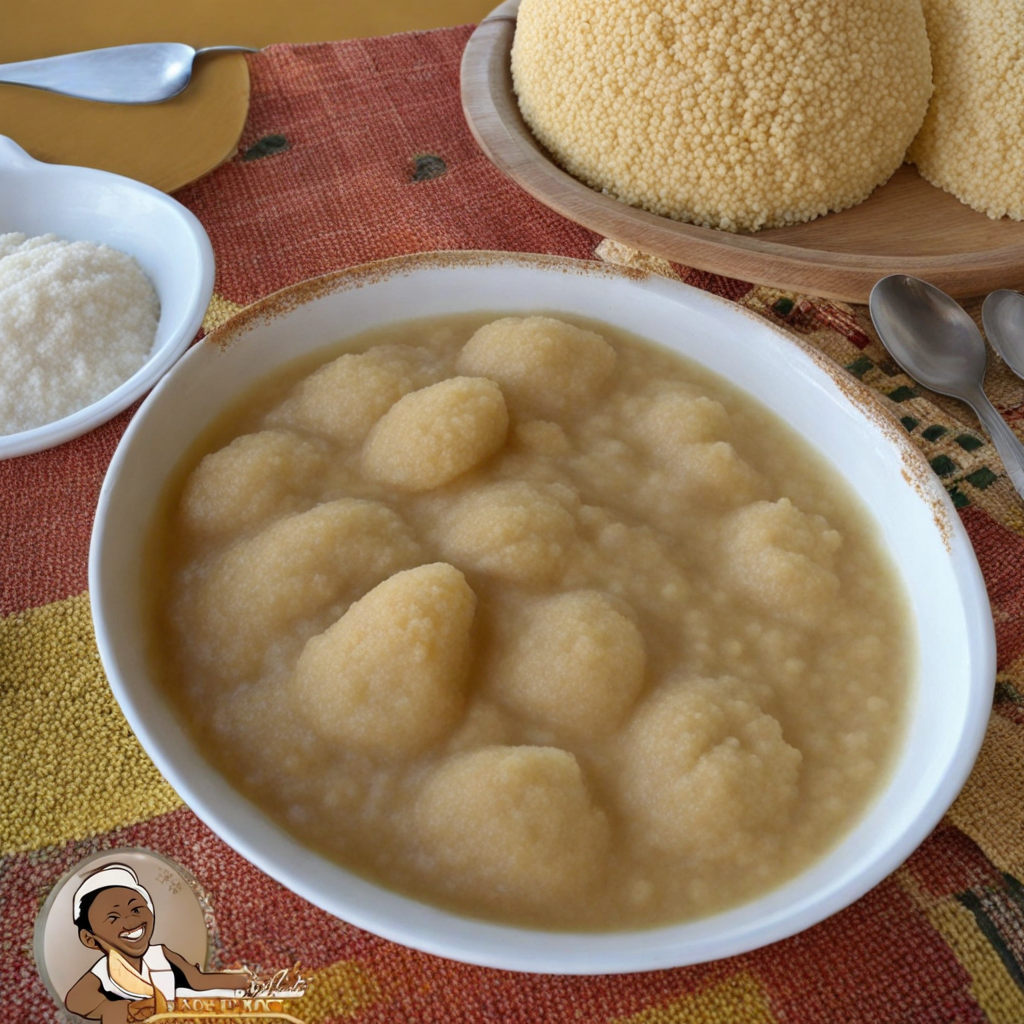Busala
Busala is a traditional Zambian dish that showcases the rich culinary heritage of the country. Made primarily from groundnuts, or peanuts, Busala is a hearty dish that often features a blend of spices and local vegetables. The groundnuts are typically roasted and then ground into a creamy paste, which serves as the base for the dish. This creates a smooth, nutty flavor that is both comforting and satisfying. The addition of ingredients like sweet potatoes, pumpkin leaves, or even okra enhances the dish's texture and adds layers of flavor, making it a delightful experience for the palate. What sets Busala apart is its versatility; it can be enjoyed as a main dish or a side, depending on the meal. In many households, it is served alongside nshima, a staple Zambian food made from maize meal, which perfectly complements the rich, nutty sauce of the Busala. The combination creates a fulfilling meal that reflects the agricultural bounty of Zambia. The dish can also be spiced up with local seasonings, adding a unique twist that reflects the region's culinary diversity. When you take your first bite of Busala, you'll be greeted with a warm, earthy flavor that is both familiar and exotic. The creamy consistency envelops each ingredient, offering a delightful mouthfeel that lingers pleasantly. Whether you are enjoying it at a local eatery or trying your hand at making it at home, Busala promises an authentic taste of Zambia that embodies the spirit of its people and their love for wholesome, flavorful food.
How It Became This Dish
An Engaging History of Busala: The Zambian Delight Busala, a traditional dish from Zambia, embodies the rich tapestry of the country's culinary heritage. This staple food, made predominantly from maize flour, is deeply embedded in the cultural practices and social fabric of various Zambian communities. As we delve into the origins, cultural significance, and evolution of busala, we uncover not just a dish, but a narrative that reflects the identity, resilience, and creativity of the Zambian people. Origins of Busala The roots of busala can be traced back to the early agricultural practices of the Bantu-speaking peoples who migrated into Zambia around 2000 years ago. They brought with them the knowledge of cultivating maize, which became a central crop in Zambian agriculture. Maize flour, known locally as "mealie meal," is the primary ingredient in busala, illustrating the importance of maize in Zambian diets. Busala itself is often associated with the Ngoni and Lozi people, although variations exist across different ethnic groups. The word "busala" is derived from the local dialect, indicating its deep connection to the Zambian language and culture. Traditionally, busala was prepared for various occasions, from daily meals to special ceremonies, reflecting the communal nature of Zambian society. Cultural Significance Busala holds a significant place in Zambian culture, symbolizing nourishment and community. It is a dish often prepared during communal gatherings, celebrations, and rites of passage. For instance, during weddings and harvest festivals, busala is served alongside various meat and vegetable dishes, showcasing the importance of sharing food as an expression of hospitality and kinship. The preparation of busala is often a communal activity, where families and friends gather to grind maize, cook, and enjoy the dish together. This act of preparing and sharing food strengthens social bonds and reinforces cultural traditions. In Zambian culture, food is not merely sustenance; it is a means of storytelling, a way to pass down traditions and values from one generation to the next. Moreover, busala is frequently accompanied by a variety of relishes, including groundnut stew, vegetable dishes, or grilled meat, enhancing its flavor and nutritional value. The combination of busala with these accompaniments reflects the agricultural diversity of Zambia and the importance of seasonal produce in Zambian cuisine. Development Over Time As Zambia underwent significant social and economic changes throughout the 20th century, the preparation and consumption of busala also evolved. The colonial period brought about shifts in agricultural practices and food availability. With the introduction of commercial maize farming and the establishment of large-scale milling operations, busala became more accessible to a broader population. Post-independence in 1964, Zambia experienced a renewed sense of cultural identity, with traditional foods like busala being celebrated as symbols of national pride. The government promoted the consumption of local foods, emphasizing the importance of self-sufficiency and the use of indigenous crops. Busala emerged not only as a staple food but also as a national dish that bridged various ethnic communities. In modern-day Zambia, busala has adapted to contemporary culinary trends while retaining its traditional roots. Urbanization and globalization have led to the introduction of new ingredients and cooking methods. Some Zambians now incorporate ingredients like soy flour or cassava to enhance the nutritional profile of busala, reflecting a growing awareness of health and wellness. Additionally, the rise of the food tourism industry in Zambia has brought renewed attention to traditional dishes, including busala. Tourists seeking authentic culinary experiences are increasingly drawn to local markets and restaurants that serve traditional Zambian cuisine. This interest has led to a revival of interest in busala, with chefs experimenting with presentation and flavor pairings to appeal to diverse palates while honoring its traditional essence. Busala in Contemporary Zambian Society Today, busala remains a staple food in Zambian households, cherished for its simplicity and versatility. It is often served as a main dish during family meals, with variations in texture and preparation. Some prefer a thicker consistency, while others enjoy a softer, porridge-like version. Regardless of the preparation style, busala continues to be a source of comfort and sustenance. In rural areas, busala is still prepared using traditional methods, often cooked over an open fire, which imparts a unique flavor. In urban settings, however, the convenience of pre-packaged mealie meal has made it easier for families to prepare busala quickly. This shift highlights the balance between tradition and modernity in Zambian kitchens. Moreover, busala has gained recognition beyond Zambia's borders. Zambian diaspora communities around the world continue to prepare and celebrate busala, keeping the tradition alive and sharing it with new audiences. Food festivals and cultural events often feature busala, showcasing its significance as a representative dish of Zambian heritage. Conclusion Busala is more than just a food item; it is a symbol of Zambian identity, community, and resilience. Its rich history reflects the agricultural practices, cultural traditions, and social dynamics of the Zambian people. As Zambia continues to evolve, so too does busala, adapting to contemporary tastes while remaining a cherished link to the past. In every bite of busala, one can taste the echoes of history, the warmth of community, and the spirit of a people connected by their love for food. Whether enjoyed in a bustling city or a quiet village, busala serves as a reminder of the enduring power of food to bring people together, nourish the body and soul, and celebrate the rich cultural heritage of Zambia.
You may like
Discover local flavors from Zambia







